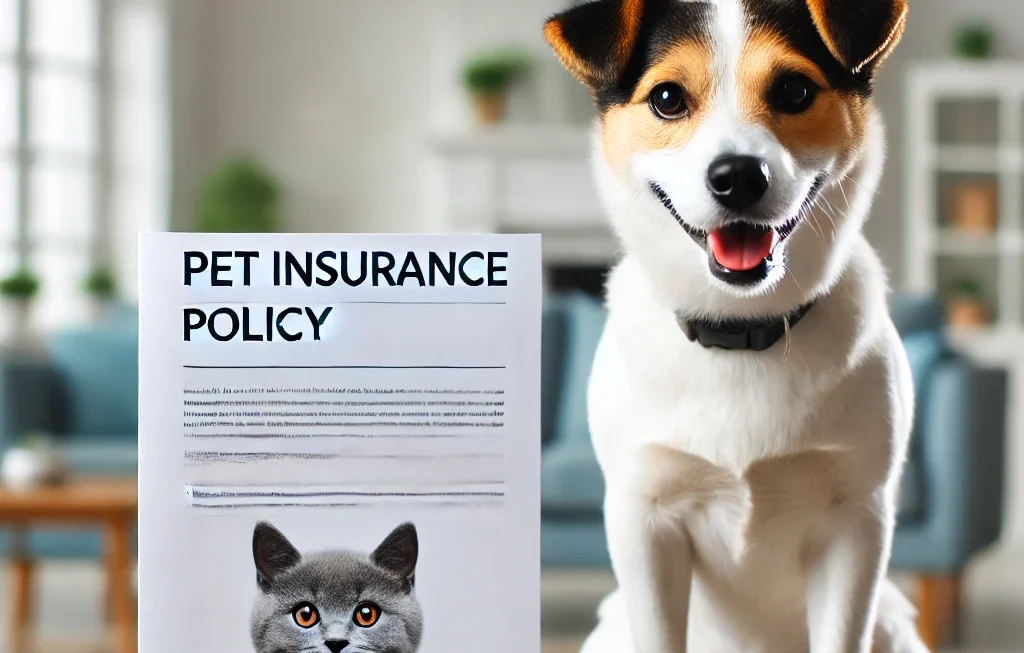Bringing a pet into your life is a joyful experience, but along with the cuddles and companionship comes the responsibility of ensuring their health and well-being. As veterinary care costs continue to rise, many pet owners are turning to pet insurance as a way to manage these expenses. Whether it’s a routine checkup, emergency care, or long-term treatment for chronic conditions, having the right pet insurance can help alleviate the financial burden. However, choosing the best pet insurance for your furry friend can be overwhelming. With so many options available, it’s essential to understand what to look for in a policy to ensure your pet gets the best care possible.
What Is Pet Insurance and Why Do You Need It?
Pet insurance works similarly to human health insurance, providing coverage for a wide range of medical treatments. The main purpose of pet insurance is to protect pet owners from high veterinary bills, whether it’s for an unexpected accident, illness, or even preventative care. Without insurance, a major surgery or treatment for a chronic condition could cost thousands of dollars. The peace of mind that comes with knowing you can afford the best possible care for your pet is invaluable.
Not only does pet insurance provide financial protection, but it also encourages pet owners to seek timely medical care, knowing that the costs are partially or fully covered. This means pets can receive the attention they need without delay, ultimately leading to better health outcomes.
Accident-Only, Comprehensive, and Wellness Plans
When choosing pet insurance, it’s crucial to understand the different types of plans available. Each type offers different levels of coverage:
- Accident-Only Plans: These plans are often the most affordable and cover injuries caused by accidents. However, they do not cover illnesses or routine care.
- Comprehensive Plans: The most popular type of pet insurance, comprehensive plans cover both accidents and illnesses. Some may also include coverage for hereditary conditions and even emergency surgeries.
- Wellness Plans: While not as common, wellness plans cover routine veterinary care, such as vaccinations, dental cleanings, and flea prevention. They are usually an add-on to a comprehensive plan.
Deciding between these options depends on your pet’s specific needs and your budget. Comprehensive plans are ideal for pet owners who want peace of mind for both accidents and illnesses, while wellness plans can be a good option if you want to cover preventative care.
What Should Be Included in Pet Insurance Coverage?
One of the key things to look at when evaluating pet insurance is the coverage provided. A robust pet insurance policy should cover the following:
- Accidents and Injuries: Coverage for broken bones, poisonings, or other emergencies.
- Illnesses: Including everything from minor infections to more serious conditions like cancer.
- Surgery and Hospitalization: Whether it’s an emergency surgery or a scheduled procedure.
- Chronic Conditions: Long-term illnesses such as diabetes or arthritis.
- Prescription Medications: Medications your pet may need post-surgery or for ongoing treatment.
Many policies also offer coverage for diagnostic tests such as bloodwork, X-rays, and ultrasounds, which are often essential for detecting issues early. When reviewing policies, ensure that they provide coverage for a wide range of treatments and conditions.
Factors That Impact the Cost of Pet Insurance
When considering how to choose the best pet insurance for your furry friend, one of the primary concerns is the cost. Several factors influence the cost of pet insurance, including:
- Pet’s Breed: Some breeds are prone to specific health issues, which can raise the cost of insurance.
- Age: As pets age, the risk of illness increases, and so does the premium.
- Location: Veterinary costs vary by region, which can affect your premium.
- Type of Coverage: Comprehensive plans with more coverage options tend to cost more than accident-only plans.
- Deductible and Reimbursement Levels: Higher deductibles typically result in lower monthly premiums, while higher reimbursement levels increase the cost.
To get the best deal on pet insurance, it’s important to weigh these factors and choose a plan that fits both your pet’s needs and your budget.
Understanding Deductibles and Reimbursement Rates
Pet insurance policies typically come with a deductible, which is the amount you pay out of pocket before the insurance kicks in. There are two types of deductibles:
- Annual Deductible: You pay this once per year, regardless of how many claims you file.
- Per-Incident Deductible: You pay this every time your pet has a new injury or illness.
Once the deductible is met, most insurance companies reimburse a percentage of the costs, typically ranging from 70% to 90%. Higher reimbursement rates mean you pay less out of pocket, but they also come with higher premiums. Understanding how deductibles and reimbursements work can help you choose the best plan for your financial situation.
You Can Also Read : How to Benefit from Insurance Rebates and Discounts
How Breed and Age Affect Insurance Costs and Coverage
It’s no secret that certain breeds are more prone to specific health conditions. For example, larger dog breeds like Great Danes are more susceptible to joint problems, while certain cat breeds may have genetic conditions that require lifelong treatment. Insurance providers take these risks into account when determining premiums, which is why breed plays a significant role in cost.
Additionally, the age of your pet will affect both the cost and coverage. Younger pets typically have lower premiums, as they are less likely to develop serious health conditions. However, as pets age, the likelihood of needing medical attention increases, leading to higher premiums and, in some cases, more limitations on coverage. It’s often best to purchase pet insurance when your furry friend is still young to lock in lower rates and comprehensive coverage.



